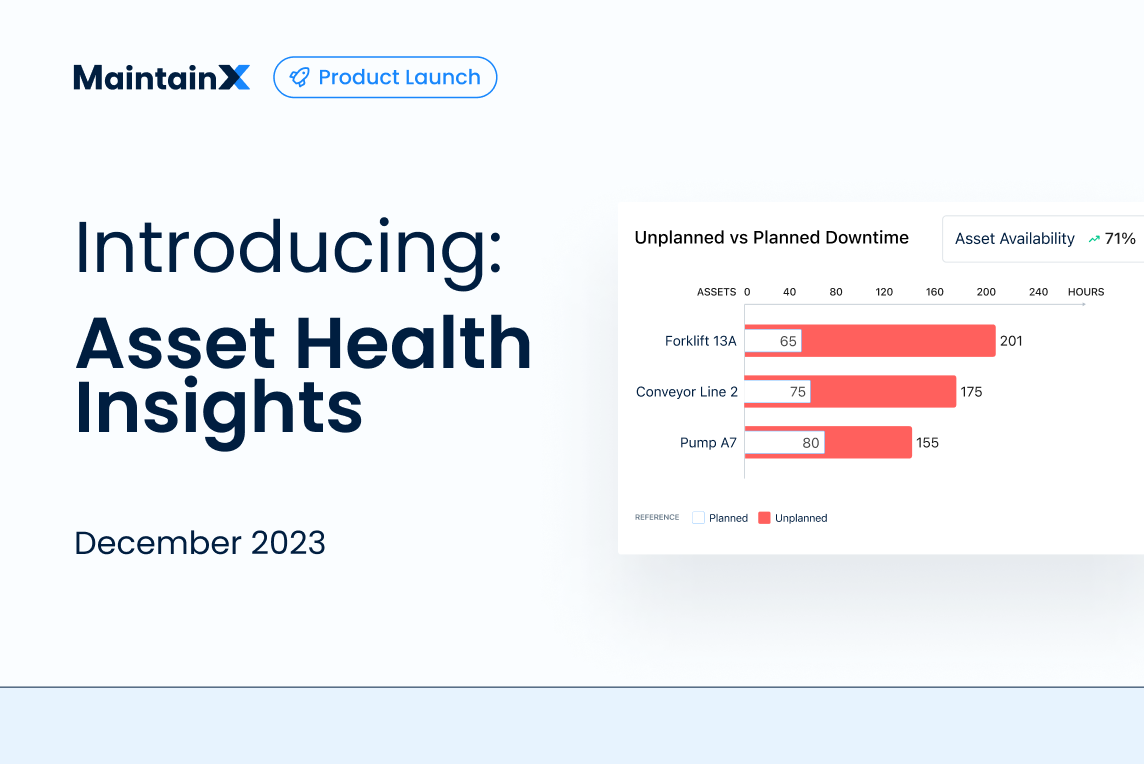
When a CNC machine goes down on a factory floor, a conveyor belt grinds to a halt, or heavy machinery fails on a construction site, the costs can be staggering. According to Deloitte, unplanned downtime costs industrial manufacturers $50 billion annually.
In these moments, all eyes turn to the Original Equipment Manufacturers (OEMs). As the creators of these machines, customers expect OEMs to provide timely support, ensure seamless communication, and help optimize maintenance strategies to maximize equipment uptime.
Yet, OEMs frequently lack the tools necessary to deliver the quality of service their customers expect. Communication gaps, incomplete datasets, complex software systems, and a lack of visibility into customer needs make optimizing equipment performance challenging.
The question is: how can OEMs ensure their deployed machines stay online and their customers stay satisfied?
In this article, we'll explore the challenges OEMs face and demonstrate how embracing digital transformation can help them overcome obstacles, strengthen customer relationships, and unlock new avenues for growth.
Three areas for OEMs to unlock potential
According to MaintainX’s recent State of Industrial Maintenance Report, an hour of unplanned downtime costs a facility around $25,000 on average. For larger organizations, this can skyrocket to more than $500,000. Customers rely on OEMs to help handle downtime, and these numbers put both OEMs and their customers under immense pressure.
The good news? Challenges like maintenance planning and parts availability present opportunities for OEMs. By meeting them head-on, OEMs can strengthen their customer relationships, enhance customer loyalty, and drive business growth.
Let’s take a look at the biggest challenges facing the OEM-customer relationship today and the opportunities OEMs have to drive success.
Communication gaps
Poor communication between OEMs and their customers can lead to many issues, including misunderstandings, delays, and overall dissatisfaction.
For example, when OEMs lack visibility into their customers' operations, they may be unaware of critical events such as equipment breakdowns or spare part needs. This can lead to prolonged downtime for customers and, in extreme cases, penalties for manufacturers that don't have the right spares in stock.
Moreover, without clear communication channels, customers might not even know how to request assistance or follow preventive maintenance plans.
A tangled web of software
Many OEMs offer branded apps. However, that means customers with large equipment portfolios need to navigate dozens of apps, each with its own user interface and features to learn. This complexity drains productivity and increases the risk of errors for operators, making it harder for OEMs to provide seamless, efficient support. Instead, OEMs should partner with technology vendors to offer a unified platform that meets all maintenance needs.
Untapped potential in aftermarket services
Finally, many OEMs aren’t fully capitalizing on the potential of aftermarket lifecycle services.
In today's landscape, selling equipment is no longer enough. Customers want long-term partners who can provide ongoing support, maintenance, and optimization services through every stage of their equipment lifecycle. For example, Rolls-Royce implemented the “Power-by-the-Hour / Total Care” model, giving customers a guaranteed business outcome instead of simply selling equipment and parts. This program led to more profit for Rolls-Royce and higher customer satisfaction.
To move up the value chain, OEMs first need to guarantee equipment performance—which is primarily driven by aftermarket lifecycle services. By excelling in this area, OEMs can expect significant revenue from parts sales and services after the initial asset sale.
If OEMs neglect aftermarket opportunities, they aren’t just leaving money on the table. They're falling behind as the industry shifts towards data-driven product improvement and customer value.
How to get ahead: New strategies for OEM success
Although these are big challenges, they’re not insurmountable. By embracing digital transformation and adopting new strategies and technologies, OEMs can overcome these obstacles and position themselves for long-term success. Here’s how.
Digitize asset manuals and information
It’s great when OEMs help customers restore functionality after failures. However, it’s better to prevent that downtime from happening in the first place. OEMs can help by digitizing critical information, giving maintenance teams instant access to up-to-date manuals and preventive maintenance (PM) programs.
Digitization efforts by OEMs significantly speed up the setup process for their customers, allowing them to implement PMs quickly and maximize uptime. Plus, in-app revision control means customers always have the most up-to-date information. At MaintainX, we've seen firsthand how this approach benefits our users: customers quickly get up and running on their PMs, parts tracking, and asset information management.
However, remember to partner with a technology vendor who can give maintenance teams a single source of truth rather than contributing to a constellation of disconnected apps.
Explore integrated solutions
Much of today’s OEM-customer communications still take place over the phone and email, which isn’t very efficient. For example, one of our design partners shared that they once exchanged 64 emails with a customer just to order a single part!
That's where integrated solutions come in.
Integrated systems enable real-time parts and data tracking for OEMs across their entire customer base. They facilitate direct, contextual communication between customers and OEMs. With access to comprehensive asset information, parts data, and work order insights, OEMs can effectively communicate and solve customer problems.
Capture aftermarket value
OEMs can't afford to overlook the immense potential of aftermarket services. It's not just about selling equipment anymore—it's about becoming a long-term partner in your customers' success.
A connected system is the key to unlocking this potential. By leveraging real-time data and insights, OEMs can proactively identify opportunities for aftermarket sales. Imagine being able to predict when a customer's equipment needs maintenance or when a part is likely to wear out. With these insights, you can reach out to customers with timely offers for services, upgrades, or replacement parts, reducing the risk of losing business to competitors.
You're not just selling parts; you're selling peace of mind.
Moreover, these strategies help OEMs move up the value chain and develop new revenue streams, like subscription-based maintenance services and performance optimization packages. By thinking creatively about adding value throughout the equipment lifecycle, OEMs can transform their business model and strengthen their market position.
Seizing the opportunity: A call to action for OEMs
Embracing digital transformation is not just an option but a necessity for OEMs. By digitizing asset information, exploring integrated solutions, and proactively capturing aftermarket value, OEMs can unlock their true potential and overcome challenges.
This transformation isn't just about technology, it's about becoming trusted partners to your customers, anticipating their needs, and optimizing equipment performance.
The opportunity is immense, but so is the competition. OEMs that fail to adapt risk being left behind. Start your digital transformation now—your customers and your business depend on it.
Check out Asset Connect, MaintainX's solution for machine builders/OEMs.

Vicky is a Senior Product Marketing Manager on the MaintainX team. She focuses on partnerships and integrations.



















